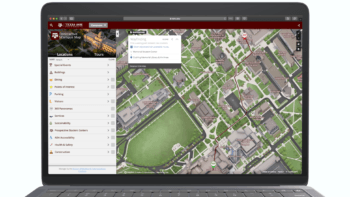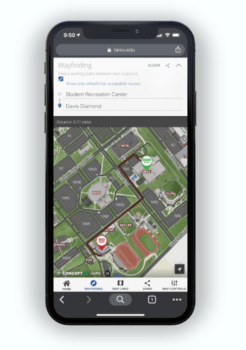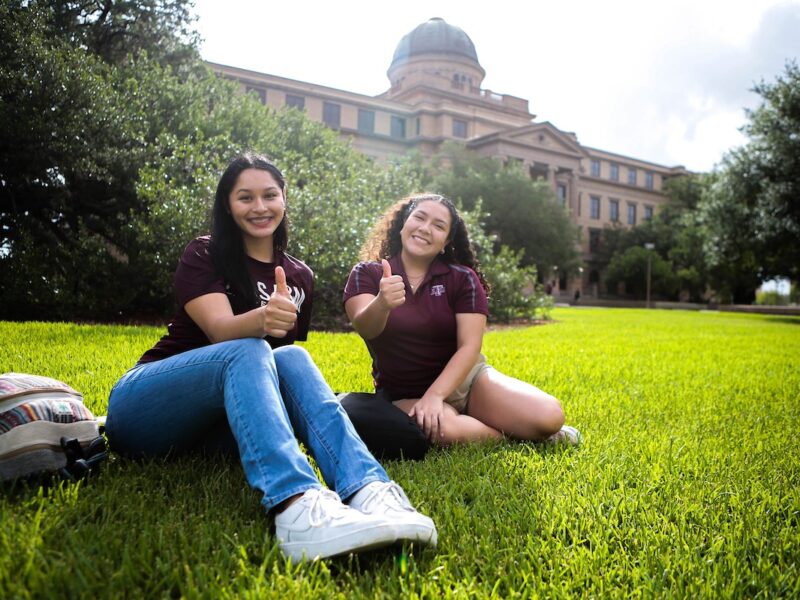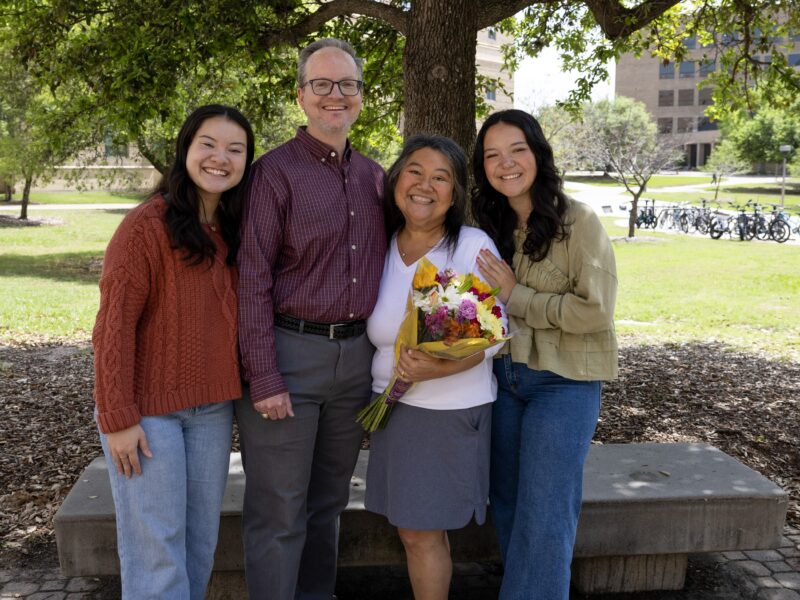Texas A&M Adds Wheelchair-Accessible Map

The Texas A&M University campus is big — one of the biggest in the nation, with more than 600 buildings on 5,200 acres. Getting around can be daunting.
To that end, the Division of Marketing & Communications developed a user-friendly, interactive map that gives information about things like parking, the Visitor Center and the Prospective Student Center, as well as about the attractions that make Texas A&M special, such as the Century Tree and Spirit Plaza.
In recent months, the map was overhauled to be even more user friendly, and information about sustainability, bike racks, special events, and health and safety was added. And as of Jan. 13, the final update for this phase is in place: information on parking and accessibility for people in wheelchairs.

“We created the map with the user in mind,” said Michael Green, manager of emerging & interactive media at Texas A&M, who leads the project. “For example, it recognizes common keywords, such as ‘coffee,’ and common misspellings, such as ‘Zachary’ for ‘Zachry.’ We’re especially excited about the new information for wheelchair users. It underscores our reputation for being a welcoming and inclusive community.”
As is often the case at Texas A&M, students were the catalyst. When a group of engineering students contacted Green about a project to help those in wheelchairs navigate the interiors of campus buildings, he put them in touch with Concept 3D, the university’s corporate partner in developing the interactive map.
That led the company and the university to work together to introduce the technology at Texas A&M. Details about the technical aspects of the project can be found in the company’s Jan. 13 blogpost.
“We are proud that Texas A&M is the first to offer wheelchair accessible wayfinding, demonstrating their commitment to inclusion mirrors our own,” said Concept 3D CEO Gordon Boyes. “Texas A&M is a leader and we could not be more pleased that we can support their efforts.”
While the terrain is relatively flat, the Texas A&M campus has lots of stairs, inclines and curb cuts, and many buildings were constructed before accessibility was a consideration. While other online maps show the shortest overall route and direct users to a building’s main entrance, this one shows the most direct wheelchair-accessible route to wheelchair accessible entrances, which are not always the main entrances.
This makes a huge difference to many at Texas A&M, according to Director of Disability Resources Kristie Orr.
“Now, disabled individuals can be sure that they know the fastest and easiest way to get where they need to go,” she said. “This map will be a model for other campuses.”
Green agrees.
“Our experience not only helps us, but Concept 3D can learn from us to make the experience better for every other institution that uses it from now on,” he said.
Media contact: Lesley Henton, 979-845-5591, lshenton@tamu.edu.





